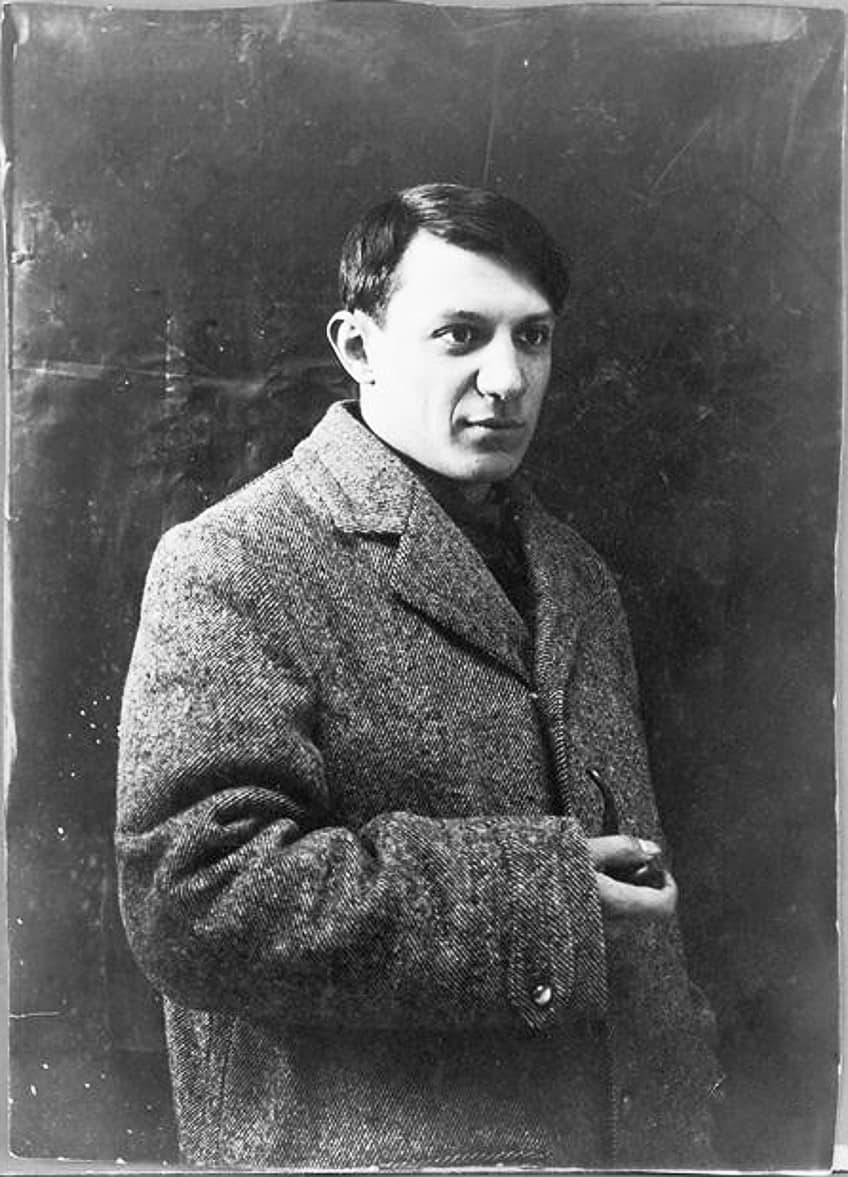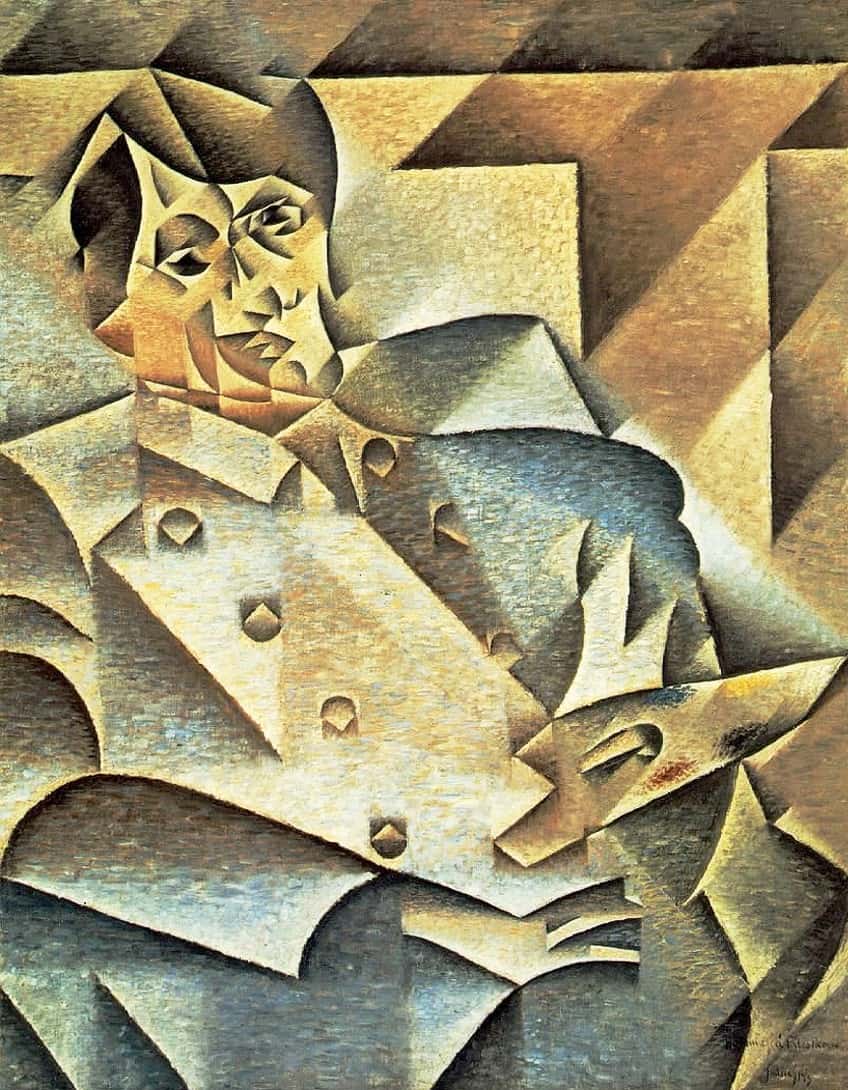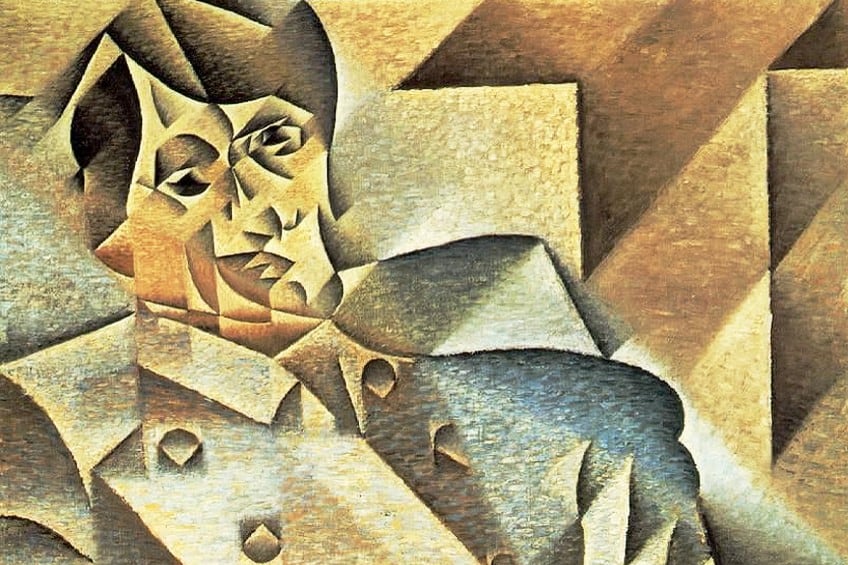Pablo Picasso Blue Period – A Look at Picasso’s Blue Period Works
Pablo Picasso’s Blue Period is an interesting phase of this famous artist’s career. But why did Picasso have a Blue Period? What prompted Pablo Picasso’s famous Blue Period? In this article, we will look at the answers to these questions and more. We will also discuss the most famous paintings from Picasso’s Blue Period.
Artist Abstract: Who Was Pablo Picasso?
| Artist Name | Pablo Ruiz Picasso |
| Date of Birth | 25 October 1881 |
| Date of Death | 8 April 1973 |
| Associated Movements | Cubism, Expressionism, Neo-Classicism, Surrealism |
| Nationality | Spanish |
Pablo Picasso was born in Málaga, Spain, on the 25th of October, 1881. His family was middle class and respected in their community. Picasso grew up in a house filled with art and culture, considering that his father also painted and taught drawing. Having an artistic father was fundamental to Picasso’s artistic career, as he did not enjoy schoolwork and started training under his father at a young age.
The first drawings and paintings Picasso made were heavily influenced by the accepted traditionally naturalistic style of the time.
He entered the San Fernando Fine Art Royal Academy with an extensive understanding of art practice. He finished his education faster than most other students and was included in a group exhibition with established artists before the age of 21. Like many of the avant-garde artists of the time, Picasso moved to Paris. He was only nineteen when he started his career there and this led to a period where he struggled emotionally and financially. This tumultuous time in his life led to his famous Blue Period (1901 – 1904).

He became more well-known after this period and transitioned over to the Rose Period (1904 – 1906) – painting primarily in pink. After Picasso created the contentious painting Les Demoiselles d’Avignon (1907) he became famous as a cubist painter. The Cubist movement and the name Pablo Picasso would be remembered forever.
He is arguably one of the more influential painters of all time and is seen by most art historians as one of the fathers of Modern art. He passed away in Mougins, France on 8 April 1973.
Pablo Picasso’s Blue Period: Why Did Picasso Have a Blue Period?
The Spanish painter Pablo Picasso went through a Blue Period in his painting career from 1901 until 1904. This period of his work is marked by great melancholy and personal and artistic change. Picasso’s Blue Period was catalyzed by the suicide of his close friend, Carles Casagemas, who took his own life in February 1901.
Picasso is known to have painted many portraits of Casagemas throughout his life and was clearly deeply touched by his tragic passing. He also actively tried to process his grief through several paintings in monochromatic blue hues.
Picasso had been in Paris for a year at that point, and the charms of the city that had initially excited him had now lost their fascinating quality. He started withdrawing from the social scene and life in the city at large. He was experiencing financial troubles at the time and struggled to produce work on canvas. In 1902, he had an exhibition at Berthe Weill Gallery in Paris, showing some of his first blue paintings. Because of a lack of funds, he was forced to produce mainly drawings for this exhibition. He was living in an apartment with a friend and shared a studio with other people as well.
He barely had money to buy food and cover rent and often returned to Barcelona, where he completed many of the most important works of the Blue Period. Many of the sad and hopeless paintings he painted during this phase are of the world of the streets, depicting beggars, prostitutes, poor and lonely women, and the blind. These subject matters all reflected Picasso’s somber reflections on life, speaking to a very dark time in the artist’s life.
He is said to have believed at that time that sadness was the basis of life and that it was favorable to thought.
The Impact of Pablo Picasso’s Blue Period
Before Picasso, painting or artworks in entirely one tone was not known. Besides photographs which were mostly in one color before the invention of color film and some religious art, there were no other artworks like the blue Picasso paintings in art history up to that point.
These paintings, which form such a cohesive group, were painted in a relatively short period of time (four years), and do not only correspond in color but also in mood, theme, and motif.

This made the collection all the more striking at the time. The paintings in this phase of his career have a dream-like feel. They look removed from reality and form a poetic message instead of speaking to actual events. This was also strange at the time, as the images appeared to be of real scenes but simply had a different energy than was expected of art at the time.
The Blue in Picasso’s Paintings
The name ‘Blue Period’ implies that all the paintings Picasso made during this period of his career were completely blue. However, the color blue did not suddenly appear and engulf all the figures in his work. It surfaced and faded gradually. However, this Blue Period reached a climax, and at that point, everything was a shade of blue – even the faces of the people he painted.
This was shocking to the Parisian turn-of-the-century art audience, as it was such a bold and unconventional move on Picasso’s part.

Even though the paintings are painted in blue hues, they never seem monotonous. Picasso achieved this by incorporating a glistening turquoise into his blue or sometimes adding a purple to give it a warmer feel. His darker blues range from dusky to almost black, whereas his lighter blues have gradations of yellow in them.
Blue Picasso Paintings: The Most Famous Works from Pablo Picasso’s Blue Period
Many paintings from the Blue Period are characterized by motionless, pensive figures that exude an oppressive and sad mood. They seem isolated and lonely, with the dominantly blue tones adding an unreal quality to them. This makes it feel like they do not exist at a specific time and place, but are lost in their inner reality.
In quite a few of the blue Picasso paintings, the theme of the lonely woman is repeated, as well as the figure of the mother and the embracing couple.
This indicates that, unlike his first sketches and paintings in Paris, the blue Picasso paintings were developed over time. Instead of capturing the momentary observations of the street scenes in the city like before, Picasso made multiple sketches and painted studies when he created these famously sad paintings in blue.
Perhaps because of his financial predicament, or possibly because he was searching for the perfect composition, but Picasso did not have a problem painting over already finished paintings during his Blue Period. During the first exhibition of these works, they were well-received and especially praised for their symbolism. Critics complained, however, that the heavy sorrow in them was not lifted even slightly to allow the viewer a breath of cheerful air. Let us look at the most famous works from this time.
The Blue Room (1901)
| Date Painted | 1901 |
| Medium | Oil on canvas |
| Dimensions (cm) | 50.4 x 61.5 |
| Location | The Phillips Collection, Washington, D.C., United States of America |
The Blue Room is considered one of the earliest examples of Picasso’s Blue Period. In 1900, he worked in Paris for the first time and was inspired by the Impressionists and Post-Impressionists. In 1901, he had his first solo exhibition in Paris and showed a painting depicting the pleasures of Montmartre at nighttime.
The Blue Room painting followed shortly after this exhibition and links to works in that collection and the other blue works that were still to come.
A Compositional Overview of The Blue Room Painting
In The Blue Room, a nude figure is bending over a tub. She seems to be in Picasso’s studio on the boulevard de Clichy, but could also be in his room in his shared apartment. In the background, there is a poster of May Milton by Toulouse-Lautrec (1864 – 1901) – a tribute to the artist that passed away in the year Picasso painted The Blue Room.
Beneath the poster, there is an unmade bed, which suggests that the woman just got out of it to wash.
The Message of The Blue Room Painting
Although we cannot see the woman’s face as she is bathing, Picasso conveys a feeling of harmony and peace. This is different from his later blue paintings, which all depict scenes of intense sadness, poverty, and loneliness. The blue – balanced here with rich reds and yellows in the rest of the room – as well as the woman’s relaxed body, add to the feeling of contentment.
The painting also suggests a night of pleasure, as the woman might have just gotten up from her lover’s bed.
As the scene plays out in Picasso’s own living quarters, it could be deduced that he is her lover. The painting is, therefore, biographical and gives us insight into his life in the earlier year in Paris. The paintings on the walls indicate that the room might be his studio, but that the studio was used both as a living room and bathroom, and that Picasso’s life was quite chaotic at the time.
The Process of The Blue Room Painting
As with many of his other Blue Period paintings, Picasso had painted over another painting to create The Blue Room. Since the 1950s, conservationists and historians have long suspected that The Blue Room held a secret underneath.
Picasso often scraped paint off while he painted, relieving forms underneath the final painting, or used the previous compositions to add to the final one.
Infrared reflectography technology was used in 2008 to look at the composition under The Blue Room, and a portrait of a man the artist painted earlier in his career was revealed. The breaded man under The Blue Room is wearing a bowtie. He is seated and touching his cheek. Researchers confirmed that both paintings were created in the summer of 1901.
The Crouching Beggar (1902)
| Date Painted | 1902 |
| Medium | Oil on canvas |
| Dimensions (cm) | 101 x 66 |
| Location | Art Gallery of Ontario, Canada |
Quite literally, as the name indicates, Picasso painted a crouching beggar in this painting. He continues the themes of poverty, suffering, and starvation common in his Blue Period paintings. In this painting, the woman also seems lonely and as if she keeps to herself.
A Compositional Overview of The Crouching Beggar Painting
In The Crouching Beggar, Picasso painted a woman covered in heavy blue robes. Her head is bent to the floor and her eyes are closed, to not confront the viewer with her gaze. Her body is completely draped in the blue-green garment, except for her face.
The Message of The Crouching Beggar Painting
Picasso, similar to The Soup and The Tragedy, continues to explore human suffering in this painting. There is, however, a feeling of moral implication in this female figure – almost as if Picasso wants us to have pity for her and confront us with our responsibility to be charitable toward suffering beggars.
The Process of The Crouching Beggar Painting
Scans done by a team of experts researching from the Art Gallery of Ontario (the owners of The Crouching Beggar painting), Northwestern University, as well as the National Gallery of Art, have shown that Picasso had originally had another vision for the woman.
Originally, her hand was stretched out, holding a disc awkwardly. Picasso chose to eliminate her hand altogether, giving us a figure with less agency as she is sitting huddled under the blankets.
Researchers have also discovered that even underneath the initial composition, there was a painted landscape of Barcelona’s Parque del Labertino de Horta. The canvas must have been gifted to Picasso by an unknown artist in his community. Picasso painted over the landscape but used the lines of the mountains as a guide for the beggar woman that was to come.
The Soup (1902 – 1903)
| Date Painted | 1902 – 1903 |
| Medium | Oil on canvas |
| Dimensions (cm) | 38.5 x 46.0 |
| Location | Art Gallery of Ontario, Toronto, Canada |
Before the height of Picasso’s Blue Period, he had an exhibition at the Vollard Gallery in France in 1901. Some of the artworks exhibited in this show hinted at the Blue Period that was to come. Even though his work was well received at this exhibition and the artist also made quite a few sales, it was not uncommon for Picasso to be without food at this time in Paris. His own financial and survival circumstances increased his awareness of the hopeless poverty that was often around him.
The Soup (La Soupe) was one such work inspired by his experience of hunger. He painted it in Barcelona in the years 1902 and 1903.
A Compositional Overview of The Soup Painting
The painting depicts an older woman holding a bowl of soup. The older lady, draped in dark blue robes, seems to be burdened by a hard life. Her posture exudes destitution. A little girl is reaching up toward the bowl in the artwork.
The painting is strangely ambiguous, as you are not certain whether the old lady is handing the soup to the little girl or whether the older woman has just received the soup from the little girl.
The Message of The Soup Painting
Picasso drew inspiration for this painting from his visits to the women’s prison of Saint-Lazare, as well as his experience of seeing the murals created in the Parisian Pantheon by Pierre Puvis de Chavannes (1824 – 1898). One of these murals depicts a starving woman helped by others in the street. In The Soup, Picasso depicts the act of selflessness and generosity.
He shows how these acts are based on the fundamental need for nourishment – that the act of charity is entirely centered on this basic need to be fed.
The Process of The Soup Painting
Picasso sketched the scene of the starved woman in one of Pierre Puvis de Chavannes’ scenes of the life of St Genevieve. This sketch probably led to the painting of The Soup. Cross-disciplinary research has shown that Picasso made significant changes to the painting’s composition while he painted it. Scans done by researchers of The Soup revealed that Picasso painted over a woman that was between and underneath the older woman and the little girl.
He used the contours of this abandoned form to create the darker outlines of the two figures in the final painting and covered the top part of the figure with the steam rising from the bowl.
Picasso might have made these changes – with Brummel and Webster-Cook’s consultation – to find a way for The Soup to fit into the broader series of the Blue Period. The shape of the figure he covered relates to many sketches and paintings he made at the time The Soup was painted. The discovery of this change and a few others have given us new insight into his creative process and how he thought about this body of work as a whole.
La Vie (1903)
| Date Painted | 1903 |
| Medium | Oil on canvas |
| Dimensions (cm) | 196.5 x 128.5 |
| Location | The Cleveland Museum of Art, Cleveland, United States of America |
The painting La Vie, meaning “life”, is the most famous painting of Picasso’s Blue Period. An interesting fact about this painting is that the title was not given to the art piece by Picasso himself. The poetic essence, spoken about above, is very evident in this artwork.
A Compositional Overview of the La Vie Painting
La Vie shows an almost nude couple clinging to each other. The female figure of the couple is completely naked and the man is just wearing underpants. They stand together on the left-hand side of the composition with the woman draping her arms over the man’s left shoulder. The man is looking at a mother holding her child, his arm slightly outstretched and his hand pointing at her in an interesting gesture.
The man and the mother are looking at each other in silence, while the woman who is embracing the man is looking down in a reserved manner.
In the middle of the picture, behind the figures, there are two paintings ladened with sorrow. These paintings within the painting create a very interesting extra layer of meaning. In the top painting, a woman is holding a distraught man – his face twisted in grief or pain. The painting on the floor, which leans against the wall, shows a figure huddled in a sad position with multiple erased iterations of the composition visible. All the figures in these paintings within the La Vie painting are naked.
The Message of the La Vie Painting
What does the man mean with the gesture of his hand? This interesting point of compositional tension – exactly in the middle of the painting – is only one of the symbols in a very symbolic painting. This complicated symbolism and the depth of tragedy and melancholy make this painting hard to interpret.
It is almost as if it evades a single meaning.
There is an obvious biographical reference, as the man painted in La Vie resembles that of Picasso’s friend Casagemas and the process paintings in the background suggest a working artist. There are, however, also larger meditations on life that are being explored in La Vie. The themes of love, death, and motherhood are all especially present in the paintings
The Process and Impact of the La Vie Painting
In initial studies before the final painting was completed, the male figure had Picasso’s features. The room he painted them in in the earlier studies was more clearly an artist’s studio. The final version of the painting shows the figures in an indefinable space, and the male’s features resemble that of Casagemas. This painting was extremely impactful at the time it was first shown.
It is the embodiment of Picasso’s Blue Period and, therefore, brought together all the powerful elements of this phase in his career.
The Old Guitarist (1903)
| Date Painted | 1903 |
| Medium | Oil on panel |
| Dimensions (cm) | 122.9 × 82.6 |
| Location | Art Institute of Chicago, United States of America |
This iconic painting of Picasso’s Blue Period was created in Madrid in 1903. The Old Guitarist captures the desolation Picasso felt at the time, as well as the solace he found in art. Let us look in more detail at this famous painting.
A Compositional Overview of The Old Guitarist Painting
In this painting, Picasso painted an old man who appears to be blind, bent over a round and large guitar. The brown guitar is the only shift in the painting’s color use. The old man’s upper body seems to be, reclining, whereas his lower body is painted as if he is sitting cross-legged.
This creates a distorted feeling, which adds to the feeling that he is being weighed down by his sorrow.
The Message of The Old Guitarist Painting
The instrument the old man is playing almost appears as another presence in the room with him. It is his only comfort against loneliness, poverty, and blindness – which he seems completely oblivious to as he plays his guitar.
Picasso expresses here his belief that art helps us to process the truth even if what we create is not representative of our realities.
The Process and Inspiration of The Old Guitarist Painting
Pablo Picasso was inspired by the Symbolist writings that were present at the time, which spoke of blind characters gifted with the power of inner vision. He also drew on the notable art of El Greco (1541 – 1614), the 16th-century painter.
This influence is evident in the distorted, pointy, and stretched-out limbs of the old man.
This painting was also famously examined with special technology that revealed a ghostly image of a woman Picasso had covered up. The composition looked to be of a seated woman, with only her face, outstretched arm, and legs still visible in the scans conducted.
The Tragedy (1903)
| Date Painted | 1903 |
| Medium | Oil on wood panel |
| Dimensions (cm) | 105.3 x 69 |
| Location | The National Gallery of Art, Washington, D.C., United States of America |
This mournful painting from Picasso’s Blue Period brings little relief to this body of extremely sad paintings. The desperation, intense blues, and struggling figures common to this period in his work are also present in The Tragedy.
A Compositional Overview of The Tragedy Painting
This painting is of a vertical orientation and shows a woman, a young child, and an elderly man standing close to the seashore. The waves are lapping gently against the beach. All the figures are hunched over, their postures set against the weather or their struggling lives. They are barefoot, their complexions are gray, and their features are outlined with darker blue.
The woman at the left of the composition has her back turned towards the viewer; her head bowed down in dejected resignation.
Her body is fully clothed, with a shawl wrapped around her shoulders. It looks like she is hugging her body under the shawl. The elderly man has a similar posture to hers and it looks like the whole group is shivering in the cold. The child is looking toward the woman and is touching the man’s thigh, his other hand stretched out in front of his waist.
The Message of The Tragedy Painting
Even though there is no visible disaster on the beach, the postures of the adults indicate that all is not well. Picasso used their body language and the fact that they are not touching or making eye contact to create a sense of deep tragedy.
The child with them seems to be too young to understand what is wrong and is the only one looking up searchingly in the woman’s direction.
As the adults are too distraught to comfort the child, the tragedy suggested in this painting must be overwhelming. Here, Pablo Picasso is speaking about the concept of tragedy in the general sense instead of referring to a specific event.
The Impact of The Tragedy Painting
Picasso chose to paint this painting in a crude yet semi-naturalistic way (in the sense that the postures of the figures are all too familiar). The Tragedy, therefore, speaks to our human experience, how we are in the world, our weaknesses, moral shortcomings, and personal failures without beating around the bush. This makes the painting hard to look at, as a sense of responsibility for these people stranded in their sadness on the beach is evoked.
During Pablo Picasso’s Blue Period, the artist concentrated on the human form and the tragedy we as humans experience. He expressed an inner tragedy and his awareness of suffering around him in shades of blue. Many critics see this phase of his career as the time when he produced his best work.
Frequently Asked Questions
What Prompted Pablo Picasso’s Famous Blue Period?
Pablo Picasso’s good friend Carles Casagemas committed suicide in February 1901. This was extremely hard for Picasso to process and sent him spiraling into a phase of deep sadness. At the time, Picasso believed that sadness was more important than thought and that it was the basis of life. This was reflected in the subject matters he worked with during his Blue Period.
Why Did Picasso Have a Blue Period?
In the first few years Picasso lived in Paris, he struggled financially. His own predicament with money and the death of his close friend, Carles Casagemas, culminated in an amplified awareness of other people’s struggles. He felt very melancholic and painted scenes and themes that reflected this inner truth.
Did Picasso Really Paint in Only Blue?
Unlike the name suggests, the blue in Picasso’s works did not show up all at once. The blue hues gradually faded into his work and then faded out again. That being said, the Blue Period definitely reached a climax, and at that point, everything was blue with some green, yellow, and purple tones subtly worked in between.
Nicolene Burger, a South African multimedia artist and creative consultant, specializes in oil painting and performance art. She earned her BA in Visual Arts from Stellenbosch University in 2017. Nicolene’s artistic journey includes exhibitions in South Korea, participation in the 2019 ICA Live Art Workshop, and solo exhibitions. She is currently pursuing a practice-based master’s degree in theater and performance. Nicolene focuses on fostering sustainable creative practices and offers coaching sessions for fellow artists, emphasizing the profound communicative power of art for healing and connection. Nicolene writes blog posts on art history for artfilemagazine with a focus on famous artists and contemporary art.
Learn more about Nicolene Burger and about us.
Cite this Article
Nicolene, Burger, “Pablo Picasso Blue Period – A Look at Picasso’s Blue Period Works.” artfilemagazine – Your Online Art Source. December 2, 2022. URL: https://artfilemagazine.com/pablo-picasso-blue-period/
Burger, N. (2022, 2 December). Pablo Picasso Blue Period – A Look at Picasso’s Blue Period Works. artfilemagazine – Your Online Art Source. https://artfilemagazine.com/pablo-picasso-blue-period/
Burger, Nicolene. “Pablo Picasso Blue Period – A Look at Picasso’s Blue Period Works.” artfilemagazine – Your Online Art Source, December 2, 2022. https://artfilemagazine.com/pablo-picasso-blue-period/.



